Physics AS
Introduction Physical Quantities & Base units Vectors & Scalars Kinematics Pressure & Density Dynamics Momentum Energy, power & efficiency Deformation of solids Waves Superposition Stationary waves Electric fields Electricity Circuits & Kirchoff's laws Radioactive Physics AS PracticalPaper 5More
Reference Pastpaper QuestionsVelocity, Acceleration & Motion Graphs
Distance
It is the length moved by the object irrespective of its direction
SI Units : Meters (m)
Displacement
It is the distance moved in a specified direction from the point of reference // It is the shortest distance between two points.
SI Units : Meters (m)
Velocity
It is the rate of change in displacement
ms-1 = m/s
SI units: Meters per sec ( ms-1 )
What is velocity?
Remember velocity and displacement have a sign/angle and a magnitude
Whenever we talk about velocity it means instantaneous velocity or velocity at a specific point. So remember to say "rate"
Velocity = Change in displacement / Time
v = ∆s/t
For Displacement-time graphs, it shows how displacement of an object changes with time. Displacement is the distance from the starting point (in a specified direction)
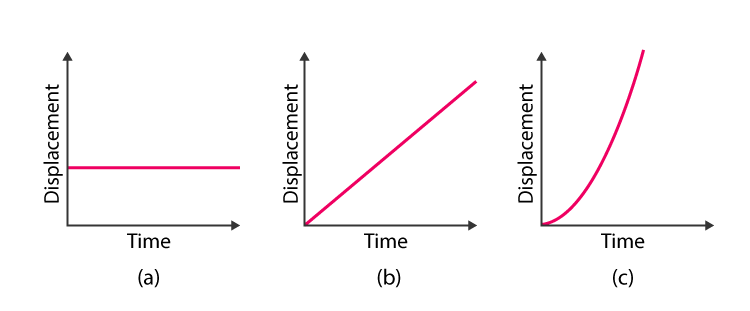
The gradient gives us the velocity
Gradient=(Y1-Y2)/ (X1-X2)
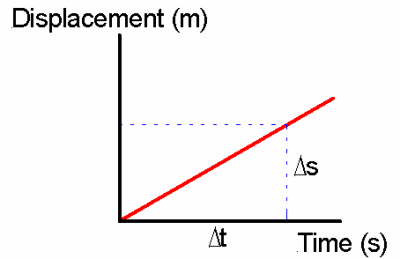
so the change in y gives us the change in displacement and change in x gives us change in time, so this gives us velocity
If the displacement-time graph is curved this shows that the gradient is changing, so when the gradient is changing the velocity is also changing which means the object is accelerating
Also remember these points, displacement is a vector and can have negative values. If it is behind the starting point. Whenever the object is losing velocity the gradient becomes horizontal. As soon as the object moves behind, the gradient is negative and so is the velocity. This is because we look at instantaneous velocity and so the rate of change in displacement is now negative becuase it is in the opposite direction. So the displacement value decreases but, if it hasn't still passed the starting point, the graph is still above(positve)
For curves, you have to find the velocity at a particular time so we need to draw a tangent of the displacement-time graph
The area under the velocity-time graph gives us the NET displacement
Speed
It is the rate at which distance changes
Speed = distance / time
ms-1 = m/s
SI units: Meters per sec ( ms-1 )
Remember that average speed and instantaneous speed is different as average speed is the total distance/displacement travelled per unit time so it is not rate but an average
The speed-time graph is very similar to displacement-time graph however, the negative gradient part doesn't exist in speed-time graphs. The gradient is equal to speed
Also the graph can not have negative gradient or speed as speed is a scalar quantity
Acceleration
It is the rate of change in velocity
Acceleration = change in velocity/time
a = v-u/ t
This is actually one of the four equations of motion
(Acceleration*time) + initial velocity = final velocity
at + u = v
So remember, whenever velocity changes, there is always an acceleration
Negative Acceleration
Whenever an object is slowing down in the positive direction then we know final velocity(v) is less than the initial velocity(u). So then we get a Negative acceleration. However, if we were to increase the velocity in the same(positive) direction, it is a positive acceleration
When an Object is increasing velocity(magnitude) in the opposite direction, it has a negative acceleration. This is because, it becomes -(v-u). If it were to slow down then it would have a positive acceleration
Equations of motion
Remember these equations only work when acceleration is constant. When acceleration changes then we need to break it to separate(fixed) accelerations and substitute the equations separately!
Memorise these!
at + u = v
2as + u2 = v2
(u+v/ 2) * t = s
½at2 + ut = s
Also remember these equation works for single direction motion only - basically this means contant acceleration
Just remember if you forget, U+V/2 * t is used to find the area under the velocity-time graph. It's that simple!
Projectiles and motion
Once you know how to predict the velocity, time and acceleration of an object using these equations of motion then we could apply this in projectiles/2d motions. The equations allow us to determine the velocity for a CONSTANT accelerating object in a straight line only. We need to split the (initial) velocity to two separate straight lines. This is called resolving! So if we have an initial velocity of U = 10ms-1 which is 30° North from East then we can resolve it using 10cos(30) - Horizontal velocity and 10sin(30); - Vertical velocity.
It's better to remember, cos as closing as when the angle is closed, the horizontal component is Ucosθ
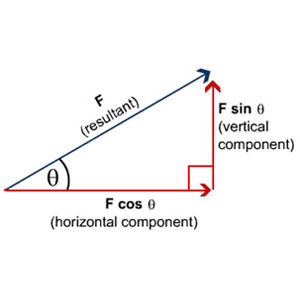
Horizontal = Ucosθ
Vertical = Usinθ
So after finding the vertical and horizontal velocity, you treat them separately. So we substitute the initial velocity to 2 separate equations
For example
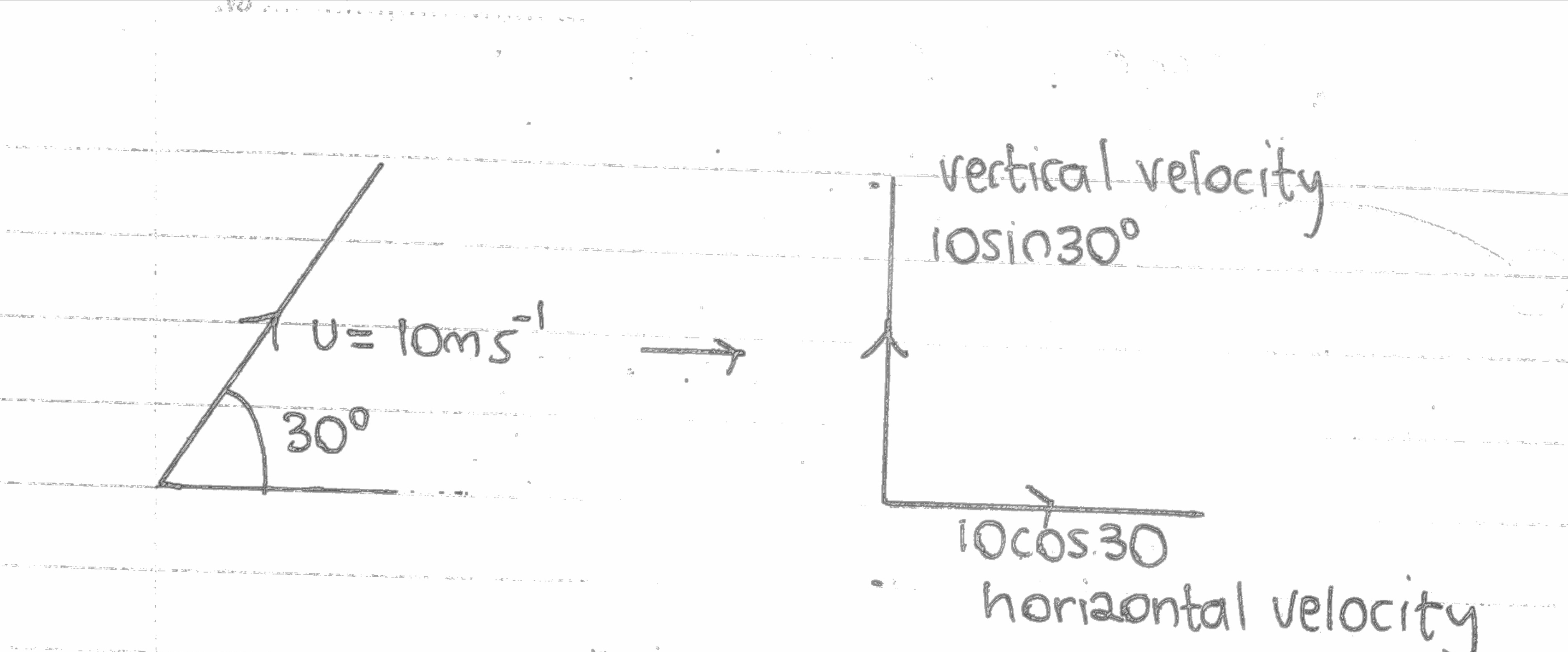
Points to remember
- At the maximum point/height, the final vertical velocity must be equal to zero
- The vertical displacement of an object in the same level are equal to 0
- When the projectile is symmetrical, remember that the vertical velocity at the end(same level) is equal to negative usinθ
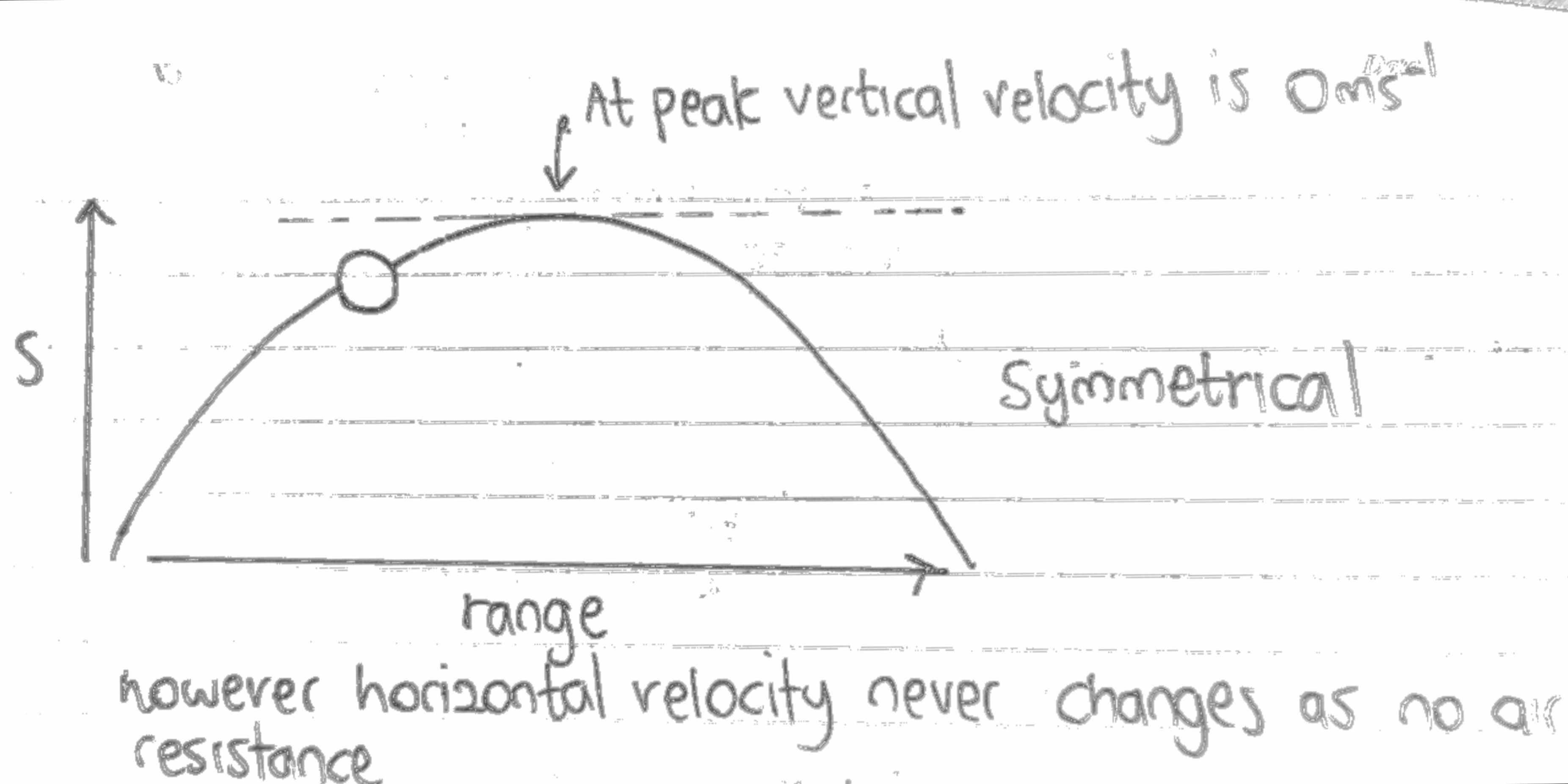
Why? As acceleration or gravity is in the opposite direction, it actually slows the ball until it reaches the maximum point
Vvertical = 0
To find the time? we know acceleration which is constant (-9.81). So we know (a) we know (v) which is zero and we know the initial velocity - which is Usinθ
so we could use this equation of motion:
u + at = v
usinθ + 9.81t = 0
So find t !
This gives us the time to reach maximum height/peak
When at the same level or height, the vertical displacement is obviously 0m. So we want to know the time for a ball to come back to the same level
½at2 + ut = 0
So as we know a and we know u and we also know s which is 0m
9.81t2+usinθt = s
So this is a quadratic function and you must put this in the calculator. So go to EQN and mode 3 and put this and solve t. T(time) will have two value - Either 0 or another value. This is because, when T = 0 the object is also at a height of 0m at the start.
You can skip this part if you want but, it is good for fast checking. This is because, when we reach the maximum point we know v = 0 when it comes back to the same level, the velocity has increased downwards and is same as the initial velocity but, negative
So then we could use → at + u = v to find t faster
Usinθ + 9.81t = -Usinθ
usinθ + at = -usinθ
-2usinθ/a = t
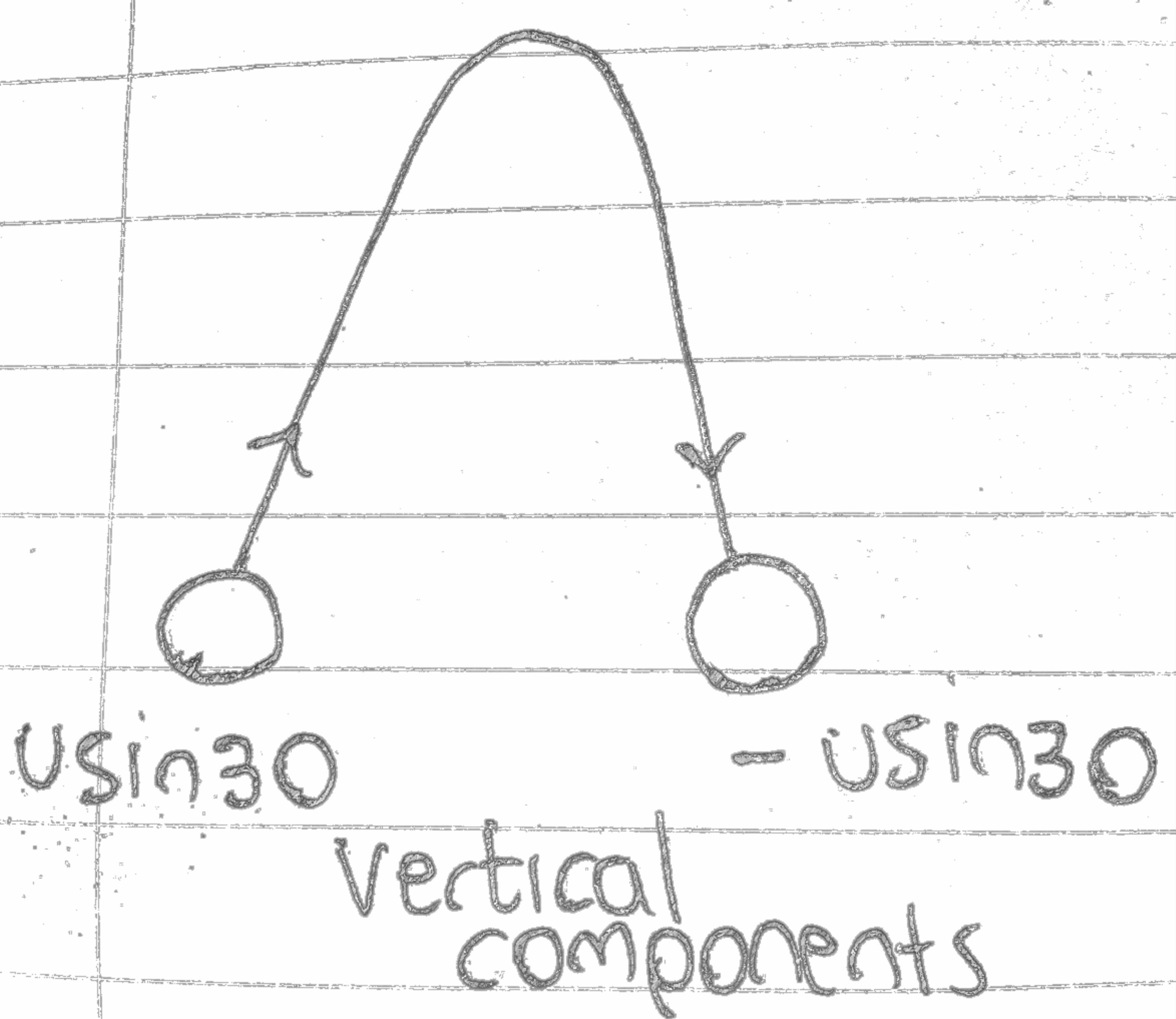
This is a fundamental mechanics equation
So after finding the time
We know that time is common for both the vertical and horizontal velocity. So once we know T, we can find the range or horizontal Displacement moved.
Rememebr that the horizontal velocity is not affected by any force and if there is no resultant force, there is no change in velocity
S = Ucosθt
The Ucosθ is the horizontal velocity so you can just multiply by T to find the displacement/range
We need to note that the horizontal velocity is constant always as there is no acceleration in that particular direction.
How to calcultate acceleration of free fall (g)
Do the experiment below:

The timer starts as soon as the electromagnet is switched off and stops as soon as the ball cuts the light gate. The timer must be accurate to 0.01s
So the length is the distance from bottom of the metal ball to the lightgate.
Make sure you repeat the experiment and get an average value for time and length.
So then we can use the equation to calculate g
½at2 + ut = s
As u = 0
½at2 = s
So we have to plot a graph of s against t2
½at2 + ut = s
Is same as the straight line equation
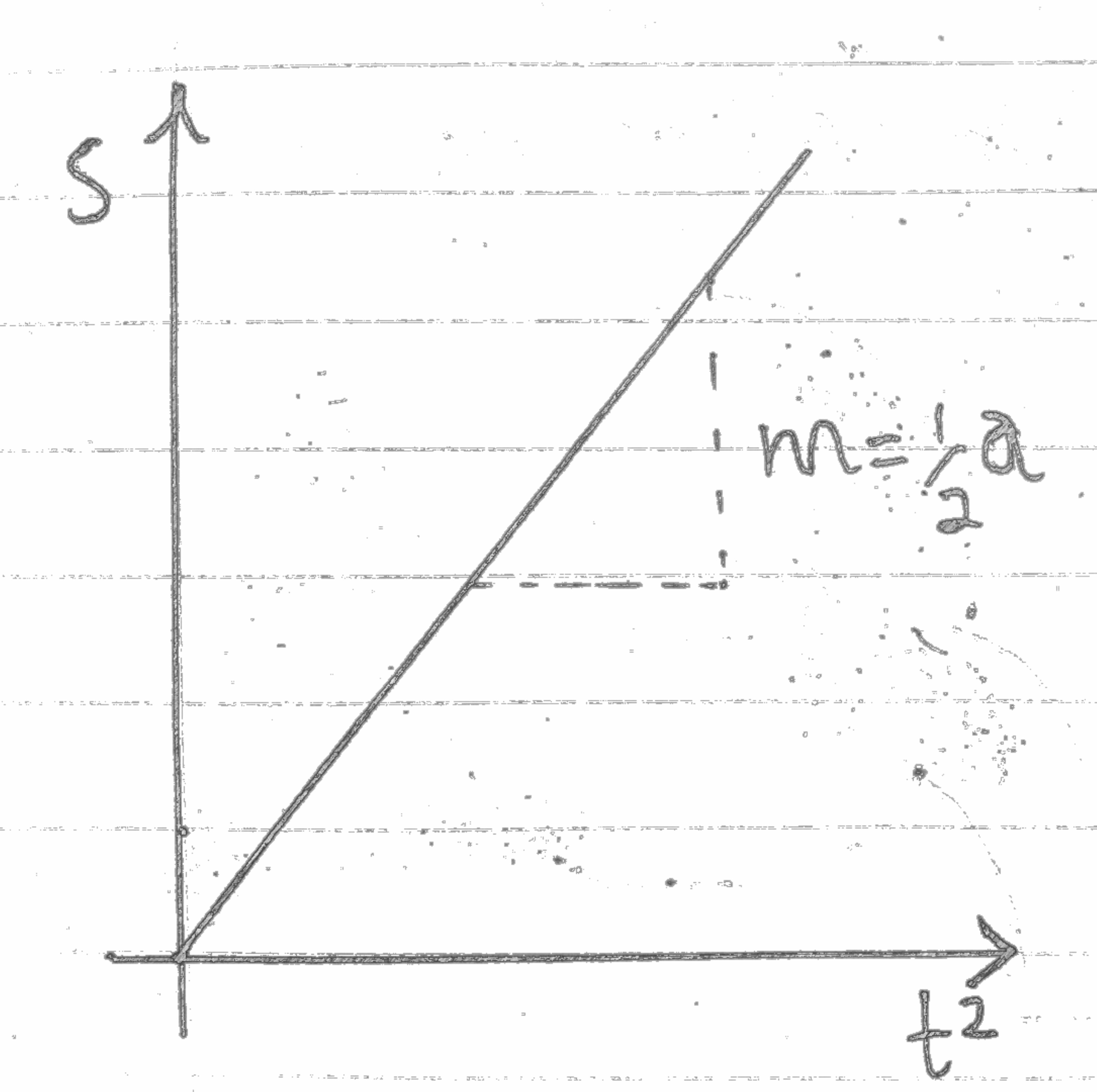
mx + c = y
The gradient is half of the acceleration so gradient must be multiplied by 2 to get the acceleration
2m = a
Falling under Gravity Graphs
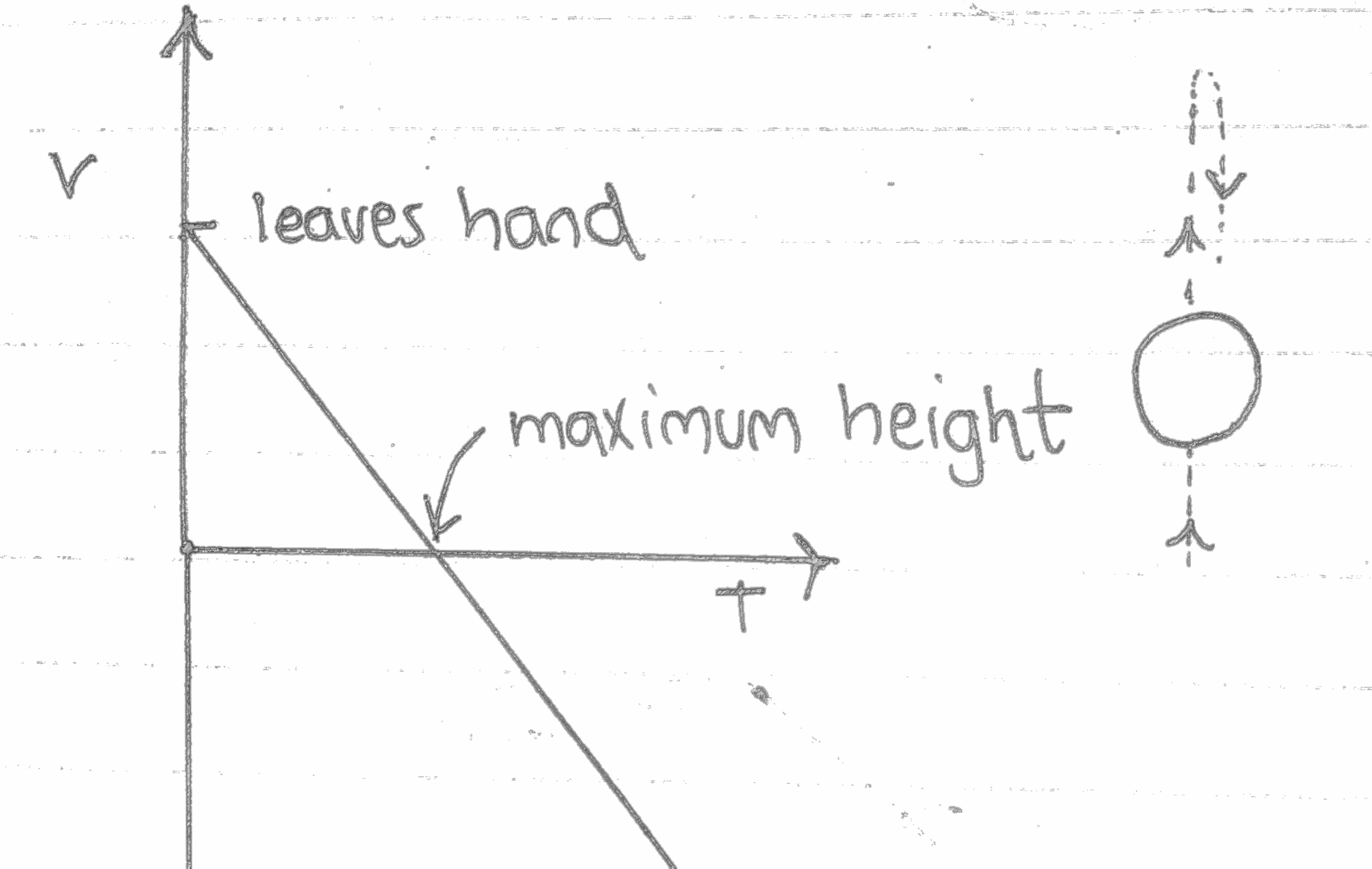
When we throw a ball up, we provide an initial velocity upwards but, the acceleration(or gravity) is downwards. So the velocity decreases until it reaches a maximum height. At this point the velocity is zero. Then the velocity starts to increase in magnitude as it falls. If we were to put this in a graph. The ball has an initial velocity at the start. This graph must have a negative gradient as gravity always acts downwards ( Negative ). And so it passes v = 0 and then continues to go downwards in a straight line!
If we drop from rest meaning at 0, then the initial velocity will start from the 0 point
Here is the displacement-time graph:
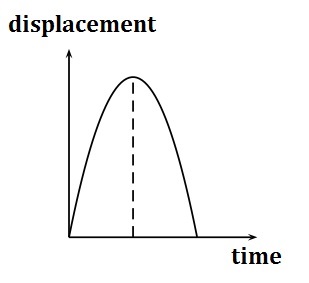
The peak is the maximum height of the ball from the the rest position/starting point.
Recommended
These are things you might like. Clicking these ads can help us improve our free services in the future...
End of Chapter Videos
Collection of Videos to Support Your Understanding.
Remember these videos are handpicked by me and I feel these are the best ones out there. But I constantly update this list for each chapter. The Youtubers are more than welcome to contact me.
Also, don't forget to Subscribe to our Youtube channel - MrWik
Watch
